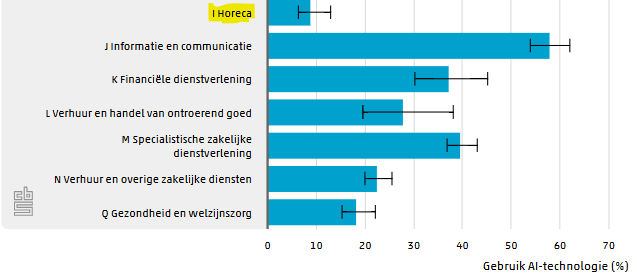A new concept is emerging: vibe marketing. Coined in tech, vibe marketing now describes a hands-on-yet-automated approach to managing customer engagement. In loyalty marketing, it means using intelligent tools to create highly personalized, data-driven programs—without getting lost in technical complexity. Rather than replace marketers, vibe marketing frees them to focus on strategy and creativity. For those looking to scale loyalty efforts with precision and agility, VEMT provides the structure and automation needed to bring the right “vibe” to every customer interaction.

How to set up a loyalty program for Franchise Formulas
How do you set up a loyalty program specifically for a franchise formula? We’d like to share some of our experiences that we have accumulated over the years with loyalty managers or marketers that are confronted with that task, or who are in the process of orienting on how to start with the realization of that objective. Connect with us if you’d like to know more and want to discuss your specific case.
How do you set up a loyalty program specifically for a franchise formula?
- Define program objectives: Start by clearly defining the objectives of the loyalty program. Is it to increase customer retention, drive repeat purchases or to encourage customer advocacy? Knowing your specific goals will guide the design and implementation process. Try to express your goals in measurable goals and KPI’s.
- Understand franchisee needs: Conduct research and engage in discussions with franchisees to understand their individual needs, challenges and capabilities. Consider their operational capacities, resources, and customer base to ensure the loyalty program aligns with their requirements.
- Implement a centralized platform: Establish a centralized loyalty platform that is capable of easy data access and that can be managed by both the company and franchisees, like you can do with VEMT’s platform. Your weapon of choice should enable seamless tracking of customer transactions, reward accumulation and redemptions across all franchise locations.
- Provide franchisee training and support: Offer comprehensive training and ongoing support to franchisees to ensure they understand the loyalty program and can effectively communicate its benefits to customers. Provide them with marketing materials, guidelines, and regular updates to facilitate their participation. Ideally, the platform provides embedded online training, like VEMT’s platform does, so training can be done consistently and without you being involved in all franchisee locations.
- Ensure consistency and branding: Maintain consistent branding and messaging across all franchise locations. Develop standardized loyalty program materials such as (digital) membership cards, signage and promotional materials to create a unified customer experience. This consistency helps customers recognize and associate the program with the company, regardless of the franchise location they visit.
- Incorporate customer feedback mechanisms: Include customer feedback mechanisms within the loyalty program, such as surveys or review platforms, to collect insights and continuously improve the program’s effectiveness. Actively engage with customers and franchisees to address concerns, implement suggestions, and enhance the overall experience.
- Monitor and analyze program performance: Sounds simple, but is often overlooked. Regularly monitor the program’s performance and analyze key metrics such as customer retention, average spend, and redemption rates. Identify trends, patterns, and areas for improvement. Use this data to refine the program and make data-driven decisions, but also provide the franchisees with the data relevant to them to enable them to make their own decisions, accelerate the impact of their campaigns and to empower local marketing.
- Foster collaboration and communication: Establish open lines of communication between the company and franchisees. Conduct regular meetings, share best practices, and encourage knowledge-sharing among franchisees. This collaborative approach ensures a sense of ownership and engagement, leading to a more successful loyalty program.
- Recognize and reward franchisee success: An important success factor: we have learned that any franchise formula based loyalty program should acknowledge and reward franchisees who actively participate in the loyalty program and contribute to its success. This recognition can be in the form of incentives, exclusive benefits, or public appreciation within the franchise network. Celebrating achievements motivates franchisees to continue their efforts and strengthens their commitment to the program.
Setting up a franchise loyalty program also poses unique challenges compared to setting up a loyalty program for a regular retailer. Here are some key challenges specific to franchise loyalty programs:
- Consistency across locations: Maintaining consistency in the loyalty program experience across multiple franchise locations can be challenging. Franchisees may have different operational capabilities, varying levels of customer service, and diverse marketing strategies. Ensuring a unified customer experience becomes crucial to prevent confusion and maintain program effectiveness.
- Franchisee engagement and buy-in: Securing franchisee buy-in and active participation in the loyalty program can be more difficult than with regular retailers. Franchisees may have their own independent business goals and priorities, and convincing them of the program’s value and aligning it with their objectives requires effective communication, training, and support.
- Brand alignment: Consistency in brand alignment is critical for franchise loyalty programs. Franchisees may have varying levels of adherence to the brand’s standards and guidelines, which can impact the loyalty program’s messaging, design, and overall customer experience. Ensuring that the program reflects the brand’s values and reinforces its positioning is a challenge that needs to be addressed.
- Data integration and technology: Integrating customer data from multiple franchise locations into a centralized system can be complex. Each franchisee may use different point-of-sale systems, databases, or customer management tools. Ensuring smooth data integration and leveraging technology to track customer transactions, points, and rewards across the franchise network requires careful planning and technical solutions.
- Franchisee autonomy and customization: Balancing the need for franchisee autonomy and program customization with maintaining consistency can be a challenge. Franchisees may want to tailor the loyalty program to their local market, which can create complexities in program design and implementation. Striking the right balance between customization and standardized program elements is crucial.
- Program funding and cost-sharing: Determining the financial structure of the loyalty program can be challenging in a franchise model. The cost-sharing between the company and franchisees needs to be fair and transparent, taking into account the varying sizes and profitability of different franchise locations. Establishing a sustainable funding model that incentivizes franchisee participation without burdening their financial resources is essential.
- Communication and training: Effective communication and training are vital for franchise loyalty programs. Ensuring that franchisees and their staff understand the program’s mechanics, benefits, and customer-facing communication is critical for its success. However, delivering consistent training and support to a geographically dispersed franchise network can be a logistical challenge.
- Franchisee turnover and onboarding: Franchisee turnover is a common occurrence in the franchise industry. Onboarding new franchisees and seamlessly integrating them into the loyalty program can be a challenge. Ensuring that new franchisees are educated about the program and provided with the necessary tools and support requires efficient processes and ongoing communication.
With these attention points and the listed risks, you should be prepared to build your franchise based loyalty program. Talk with us to discuss your specific use case and create the basis for success.
Consider discussing your specific use case with us.
Question 1: What are the initial steps required to set up a successful loyalty program for a franchise formula?
Answer: The initial steps involve defining the loyalty program’s objectives in measurable terms and understanding franchisees’ specific needs and challenges. It’s important to establish clear goals, such as improving customer retention or increasing repeat purchases, and to align these with KPIs. Engaging with franchisees to grasp their operational capacities and customer base is also essential for ensuring the program’s design meets their requirements and the overarching brand’s goals. Implementing a centralized loyalty platform, like VEMT’s, that facilitates easy data access and management across franchise locations is also a foundational step. VEMT’s platform enables seamless tracking of customer transactions, reward accumulation and redemption, ensuring consistency and efficiency across all franchises.
Question 2: How can franchise loyalty programs maintain brand consistency and ensure franchisee engagement?
Answer: Maintaining brand consistency and ensuring franchisee engagement requires coordinated efforts. First, developing standardized loyalty program materials, such as digital membership cards and promotional signage, helps create a unified customer experience across different franchise locations. VEMT can help you with that. Further, providing training and support to franchisees, possibly through VEMT’s platform, ensures they are well-informed about the program and can effectively communicate its benefits. Using VEMT’s mechanisms for regular feedback from both customers and franchisees allows for continuous program improvement and adaptation to changing needs. Monitoring and analyzing program performance through key metrics enables the identification of trends and areas for enhancement, while fostering collaboration and communication between the company and franchisees ensures a sense of ownership and commitment to the program’s success.
Question 3: What are the unique challenges in setting up a loyalty program for a franchise formula, and how can they be addressed?
Answer: Unique challenges include maintaining consistency across locations, securing franchisee engagement, ensuring brand alignment, integrating data across diverse systems, balancing franchisee autonomy with program consistency, establishing a fair cost-sharing model and managing communication and training across a dispersed network. Addressing these challenges is supported by VEMT’s loyalty platform which supports easy data integration and customer tracking across franchises, fostering open lines of communication and regular knowledge-sharing among franchisees and providing ongoing training and support. Creating a sustainable financial model that incentivizes franchisee participation without overburdening them is also crucial. VEMT can assist you in that through our experience. Balancing the need for franchisee customization with maintaining a consistent customer experience across all locations can be achieved through flexible program design that allows for localized adjustments while adhering to the brand’s core values and standards.





